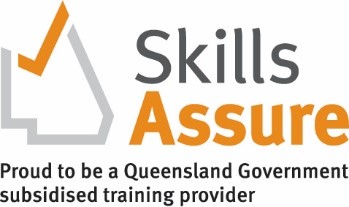EVERYTHING YOU NEED TO KNOW
Are you an employer in the aged care, telecommunications, or healthcare sector?
You might have heard that there are initiatives out there to boost the number of apprentices or trainees in your industry. Good news, in this blog article, you’ll find everything you need to know when it comes to the Australian Government’s Boosting Apprenticeship Commencements (BAC) initiative.
What is the BAC Initiative?
During the COVID-19 pandemic, the Morrison Government introduced the Boosting Apprenticeship Commencements programme to increase apprenticeships and traineeships across the nation while offering wage subsidy support to employers. The purpose of the initiative is to build a pipeline of skilled workers to support sustained economic recovery.
So where do traineeships come in? We get it. The title of the initiative can be confusing. The term ‘Australian Apprenticeship’ covers both traineeships and apprenticeships – both programs are virtually identical; They are both are competency-based training opportunities, with the key difference being the study areas on offer. For example, an apprenticeship can be completed in areas such as building and construction, hospitality or automotive, whereas traineeships are available in services such as childcare, healthcare or telecommunications.
Who is eligible for the subsidy?
If you’re an Australian employer, regardless of size/industry/location, you could be eligible, provided you meet the below:
- Engage an Australian Apprentice (remember the above definition) between October 5th, 2020, and March 31st, 2022.
- The above-mentioned Australian Apprentice is undertaking a Certificate II or higher qualification.
- The Training Contract for the above Australian Apprentice is formally approved by the relevant State Training Authority.
What you need to know
So, you’re reading along, nodding your head, and thinking, ‘this could really help us’ – great news! Here are a few extra things to consider.
- The subsidy will cover 50% of the Australian Apprentices gross wages up to $14,000 per quarter, provided they were signed into a Training Contract between October 5th, 2020, and March 31st, 2022. It applies to wages paid to an Australian Apprentice, with a maximum rebate of $7,000 per quarter for a maximum period of 12 months from commencement or recommencement.
- The payments are made quarterly in arrears. All final claims must be submitted by June 30th, 2023.
- Traineeships are available in Telecommunications, Aged Care and Individual Support.
- An existing worker is eligible for the BAC initiative provided one of the below factors apply
– they commence a trade based Australian Apprenticeship
– they transfer from casual employment to part-time or full-time Australian Apprenticeship, or; they transfer from part-time employment to full-time Australian Apprenticeship.
- The subsidy is not available to Employers who are already claiming other subsidies, such as the Supporting Apprentices and Trainees (SAT) or JobKeeper.
- Businesses may be eligible for additional financial incentives from the Australian Government when signing on an Australian Apprenticeship. This can be discussed with an Australian Apprenticeship Support Network (AASN).
- Case studies 1 & 2 listed below illustrate both an example of a new and existing employee
How to apply
If you’re still reading, chances are, you recognise the great opportunity available for your organisation.
Here’s what we recommend next.
- Book an appointment with our Business Development Managers to discuss the options available for your employees by clicking here. Even better, we’ll come directly to you and arrange for an Australian Apprenticeship Support Network (AASN) organisation to join us and discuss federal funding.
- If you already work with an Australian Apprenticeship Support Network (AASN), you can contact them directly and advise them that we are your RTO of choice.
To find out more information about the BAC initiative, you can visit the Australian Government’s webpage here.
Case Study 1: Nicola
Nicola is a 47-year-old former retail worker that has started 2-months ago with her employer as a PC2 in Central QLD. Her employer enters her into a Certificate III in Individual Support Traineeship with Ashley Institute of Training (ASH), in which she is classified as a part-time Permanent – New Worker. Over the course of her 13-month Traineeship, Nicola attracts for the employer a $1500 Completion Incentive, $1000 Rural and Regional Skills Shortage Incentive and a $1500 Mature Aged Worker Incentive, sub-totalling $4000.
On top of this Nicola has 50% of her wage subsidised for the first 12 months of her Traineeship through the federal Boosting Apprenticeship Commencements subsidy, which totals $28,000 that her employer can claim back of her $56,000 annual salary. This brings her subsidies and incentives up to $32,000 and because Nicola had a concession card at the time of enrolment her contribution fee is just $464, which was invoiced to her employer at 6 months. By this time her employer had already claimed $14,000 through the BAC wage subsidy and a further $1750 through the Rural & Regional Skills Shortage incentive and Mature Aged Workers Incentive, leaving a total surplus of $31,536. On top of this, the employer has also been able to arrange for payroll tax exemptions for Nicola.
Case Study 2: Prajeet
Prajeet is a 36-year-old Permanent Resident of AU that has been working for 13 months as a Casual PC2 in the Brisbane area. Prajeet’s employer offers her a part-time Permanent position, and she enters into a funded Certificate III in Individual Support Traineeship with ASH, in which she is classified as a part-time Permanent – Existing Worker. Over the course of her 13-month Traineeship, Prajeet attracts for the employer a Completion Incentive of $1500 and has 50% of her wage subsidised through the BAC funding, which comes to $22,000 of the $44,000 she grossed for the year. This brings her subsidies and incentives up to $23,500 and the contribution fee is $1160, which was invoiced to her employer at 6 months and has left her employer a total surplus of $22,340, plus her employer arranged for payroll tax exemptions on top of this.

 1300 274 539
1300 274 539

